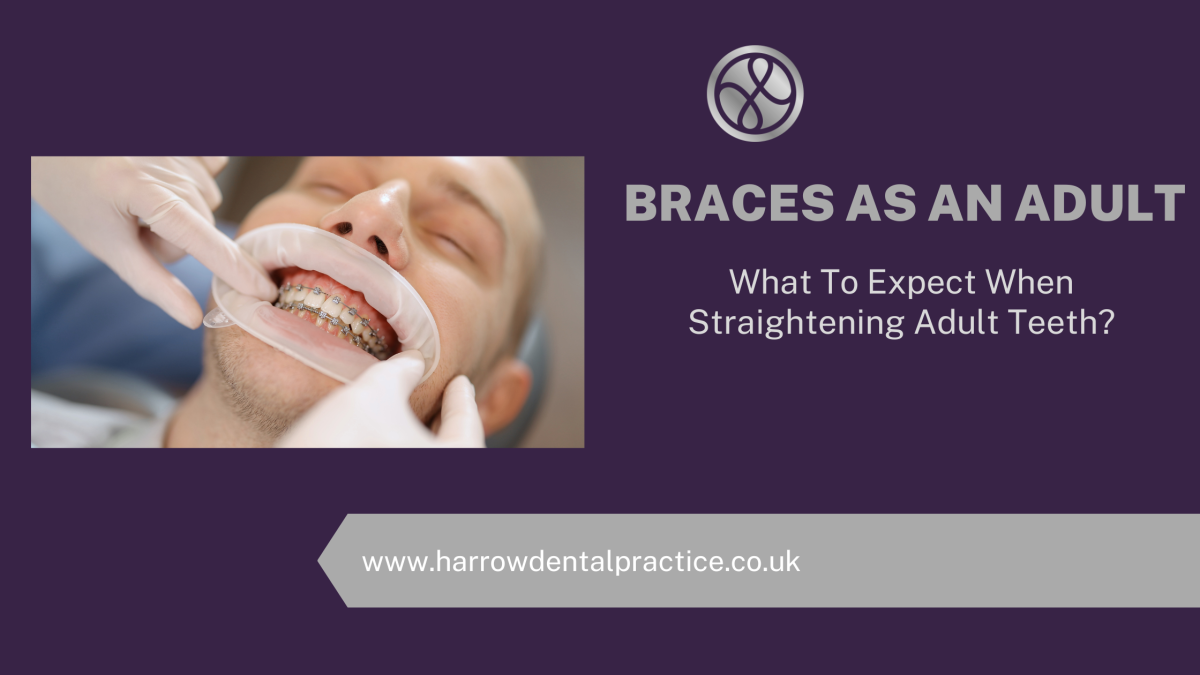“Is it possible to get teeth straightened with braces as an adult?” this is one of the questions that is commonly asked from orthodontists. Just a few years ago, it was thought that teeth straightening was only possible for youngsters and teenagers, and adults weren’t eligible. However, times have changed now! Today, no matter how old you are – sixteen or sixty – you can get your teeth straightened and enjoy your dream smile with orthodontic treatment.
But what’s the difference between braces treatment during teenage and adult life? If you are looking for an answer to this question, you have come to the right place! This blog will discuss everything you need to know about adult braces treatment. So, continue reading to find out more about adult orthodontics.
What Is It Like To Wear Braces As An Adult?
Today, many adults are considering orthodontic treatment to enjoy a healthy and beautiful smile. Although the process largely remains the same for youngsters or adults, the difference mainly lies in the treatment speed. At a young age, the bones are flexible and allow for easy movement and realignment of the teeth. On the other hand, bones tend to become brittle due to limited blood supply. As a result, tooth movement takes longer and may cause slightly more discomfort. So, orthodontic problems can be completely treated at an older age; just that it can take slightly longer to do so.
When Should You Get Braces If Your Teeth Are Crooked?
The ideal time for getting braces is when almost all the permanent teeth have appeared – except the wisdom teeth – and the jaws are still growing. According to the NHS, the ideal age for kids to get braces treatment is 12 or 14. However, parents should bring their kids for an orthodontic visit earlier in life so that the orthodontist can identify any underlying issues and take preventive measures.
But this does not mean that you can only get braces at a young age. According to the British Orthodontic Society, treatment with braces is possible at any age. However, the best results are achieved when the treatment starts at an early age.
What Are The Pros And Cons Of Metal Braces?
Metal braces are one of the most commonly used and time-tested options for straightening crooked and misaligned teeth. However, like all dental restorations and treatment options, metal braces also have certain merits and demerits.
Some of the advantages of metal braces are:
- Treatment precision
- Braces can treat a wide range of orthodontic issues, even the complicated ones
- Treatment can be performed by almost every dentist worldwide
- Less expensive than other treatment options
Similarly, the drawbacks of metal braces are:
- Conspicuous metallic appearance creates aesthetic concerns
- Difficulty in eating and chewing
- Oral hygiene maintenance becomes challenging
- Dietary limitations
- Potential for soft tissue injuries from orthodontic wires and sharp edges of the brackets
Do People Notice When You Get Braces As An Adult?
Despite being a time-tested and highly effective treatment option, a limitation of traditional braces is their conspicuous metallic appearance which is not liked by many. Unfortunately, metal braces become visible when worn, especially on the front teeth. However, if you have been avoiding orthodontic treatment because of the unaesthetic appearance of these braces, don’t worry; other aesthetically more pleasing options are available such as ceramic and lingual braces or clear aligners.
What Should One Know Before Getting Braces?
The foremost thing one should remember before seeking treatment is that braces require long-term commitment and adherence to the dentist’s instructions. You can expect a complete resolution of your view with minimal risk of relapse if you follow your dentist’s instructions to the letter. Otherwise, you may soon observe after your treatment that your teeth return to their old positions. So, patient compliance is very crucial in treatment with braces.
Is It True That Braces Weaken The Teeth?
It is a common misconception that braces weaken one’s teeth. However, this is not true. The fact is that braces won’t harm your teeth, gums, or oral health if you look after your oral health. Our teeth only weaken when we ignore oral hygiene during braces treatment, leading to plaque and tartar formation, causing gum disease. If gum disease is not treated timely during orthodontics, it can make our teeth weak and cavity-prone.
How Long Until Braces Start Moving Teeth?
Braces start pressuring your teeth to realign themselves as soon as you wear them. However, you may not observe significant tooth movement or shift until a few weeks. This is because it takes time for the teeth to degrade the bone around them so that they begin to move. So, you can expect your teeth to start moving after a few weeks of initiating the orthodontic treatment.
What Should I Expect About My Teeth Before Taking Off Braces?
Congratulations on completing your braces-wearing period. Now, it’s time to remove them and place retainers over your teeth so they don’t move backwards. However, once your braces are removed, you may observe yellowish spots around your teeth. These are the adhesive remnants used for bonding your brackets with the teeth. But there is no need to worry. Your dentist will remove these yellow spots.
So, are you ready to get your teeth straightened with braces and enjoy a beautiful smile? If you live in Hornchurch and looking for the best orthodontic practice in town, then Harrow Dental is the best place for you. We offer our esteemed patients a wide range of orthodontic and general dental services in a comfortable and relaxing environment. So, Book an appointment with us today and begin your journey towards a beautiful and healthy smile.

